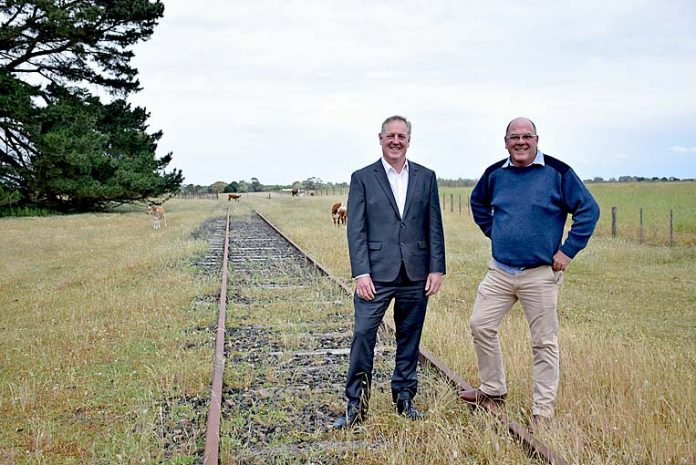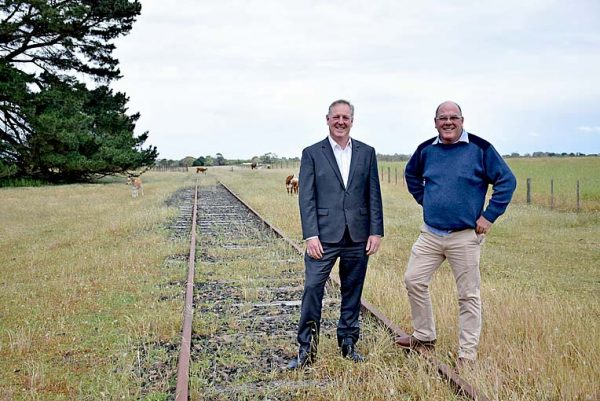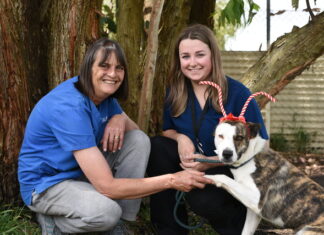

A STUDY investigating the value of reestablishing rail in the Green Triangle Region has been welcomed by the city’s state and federal MPs.
Independent MP Troy Bell and Member for Barker Tony Pasin have backed a Regional Development Australia (RDA) Limestone Coast-commissioned economic benefit study focusing on reinstating rail from Heywood to Wolseley.
The study will begin early next year and will assess the full route and viability of segments, including Mount Gambier to Heywood with an intermodal connection on the eastern outskirts of Mount Gambier.
RDA Limestone Coast chair Peter Gandolfi said the resurrection of rail may prove to be an enabling action to boost the local economy by increasing productivity and lowering freight costs.
“One of the major drivers behind this move is the current limitations transport imposes on our productivity,” he said.
“The costs associated with transporting goods accounts for 21pc of all production costs in our region.
“If we are serious about achieving greater economic growth for the Limestone Coast, we need to explore more efficient means of transport.”
The study will be undertaken externally and is expected to be complete by mid-2019.
Mr Gandolfi said the RDA Limestone Coast would meet with stakeholders to discuss opportunities through the reinstatement of rail services.
He floated industries including agriculture, manufacturing and timber as being potential beneficiaries of rail freight transport.
Mr Gandolfi said although the re-establishment of rail was “not a new discussion”, increased volumes of freight being moved along the roads had prompted revisiting the possibility.
While freight costs will be the main impetus for the study, the work will also involve strategic actions to assess the status quo and viability of rail for the region.
This will include the economic drivers associated with rail, however the potential for passenger transport has not been ruled out and may also be considered as part of the study.
“When we consider what is happening with rail in other areas of the country, now is an opportune time to examine the possibilities,” he said.
“The investment in inland rail connecting Melbourne to Brisbane, as well as the Victorian Government’s investment in rail, are examples of the focus around the railways.”
Member for Mount Gambier Troy Bell welcomed the study and said he also would like to see the return of passenger services examined.
“If it were re-established, a rail freight service would be a valuable connection for the South East into major ports of Australia, as many manufacturers transport goods from the lower South East into Melbourne and the East Coast of Australia,” he said.
“Having access to the national rail line opens up a wealth of opportunities for manufacturers in our region and has the potential to significantly reduce transport costs.
“Having cold storage facilities and a freight loading intermodal located close to the saleyards presents some interesting economic and logistical opportunities for the region.
“I would also like to see a feasibility study into passenger services linking into Melbourne from Mount Gambier.”
Member for Barker Tony Pasin said he was looking forward to seeing the results of the study, adding the Federal Government “supports rail infrastructure where it is beneficial for communities and industry”.
Australian Forest Products Association South Australia branch manager Leon Rademeyer was hopeful the study would provide more clarity around how rail would impact the forestry industries value chain.
However, he said the potential impact of rail freight on employment in the local road freight sector “should be thoroughly investigated”.
“In principle, any feasibility study to improve the local economy should be welcomed – especially if it is to focus on improving productivity and lowering freight costs,” Mr Rademeyer said.
“However, in the South East we have to acknowledge in the first instance that road freight remains a critical component of the forestry industries and thus the economic fabric of the region.
“This importance needs to be ‘top of mind’ in any study or debate about introducing alternative transport modes to the region.
“In this regard the potential impact of rail freight on employment in the local road freight sector should be thoroughly investigated.”
South Australian Regional Rail Alliance spokesperson Russell Stiggants said there was a “very good opportunity” to return a rail line in the region and highlighted the impact it could have on existing transport services.
“If the trains were brought back into rural SA, it would take a lot of the trucking movements off the main roads,” he said.
“What it might allow you to do is drive a truck onto a train, the driver would then leave their vehicle there and when it arrives in Adelaide, another driver would then drive it off.
“It would take heavy vehicles off the road and most importantly, it would make the roads safer and relieve the need for continued ongoing maintenance, which frankly in a lot of cases is not happening.”





